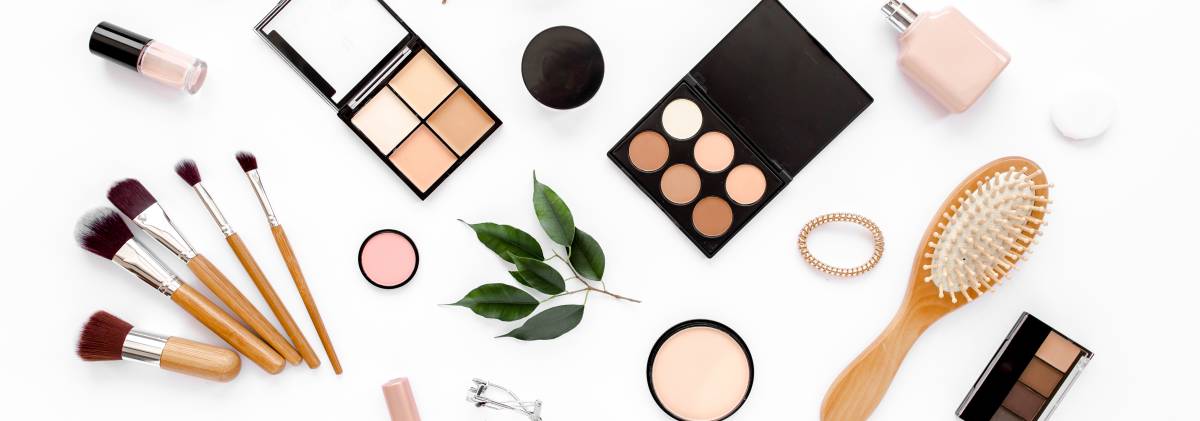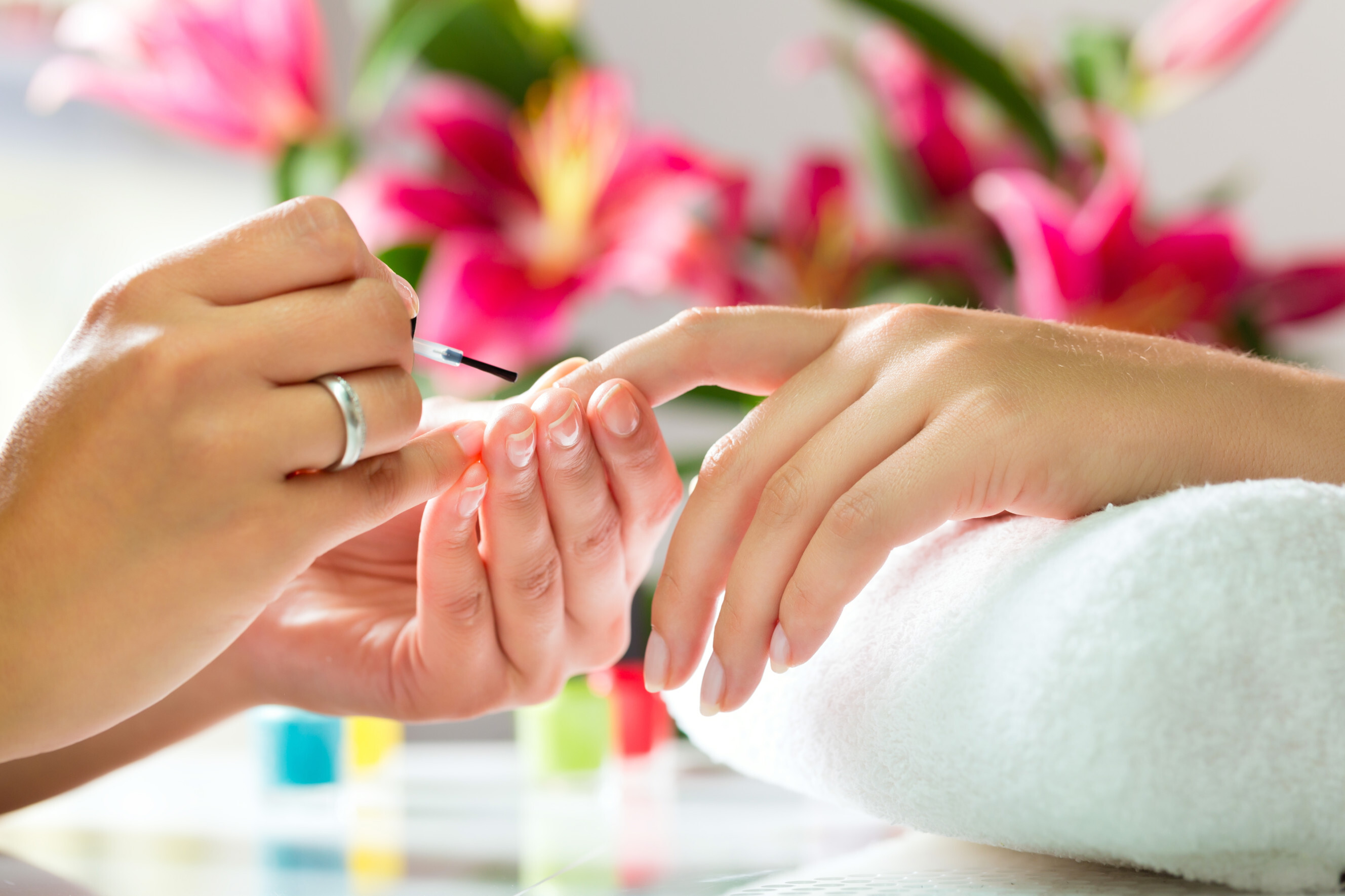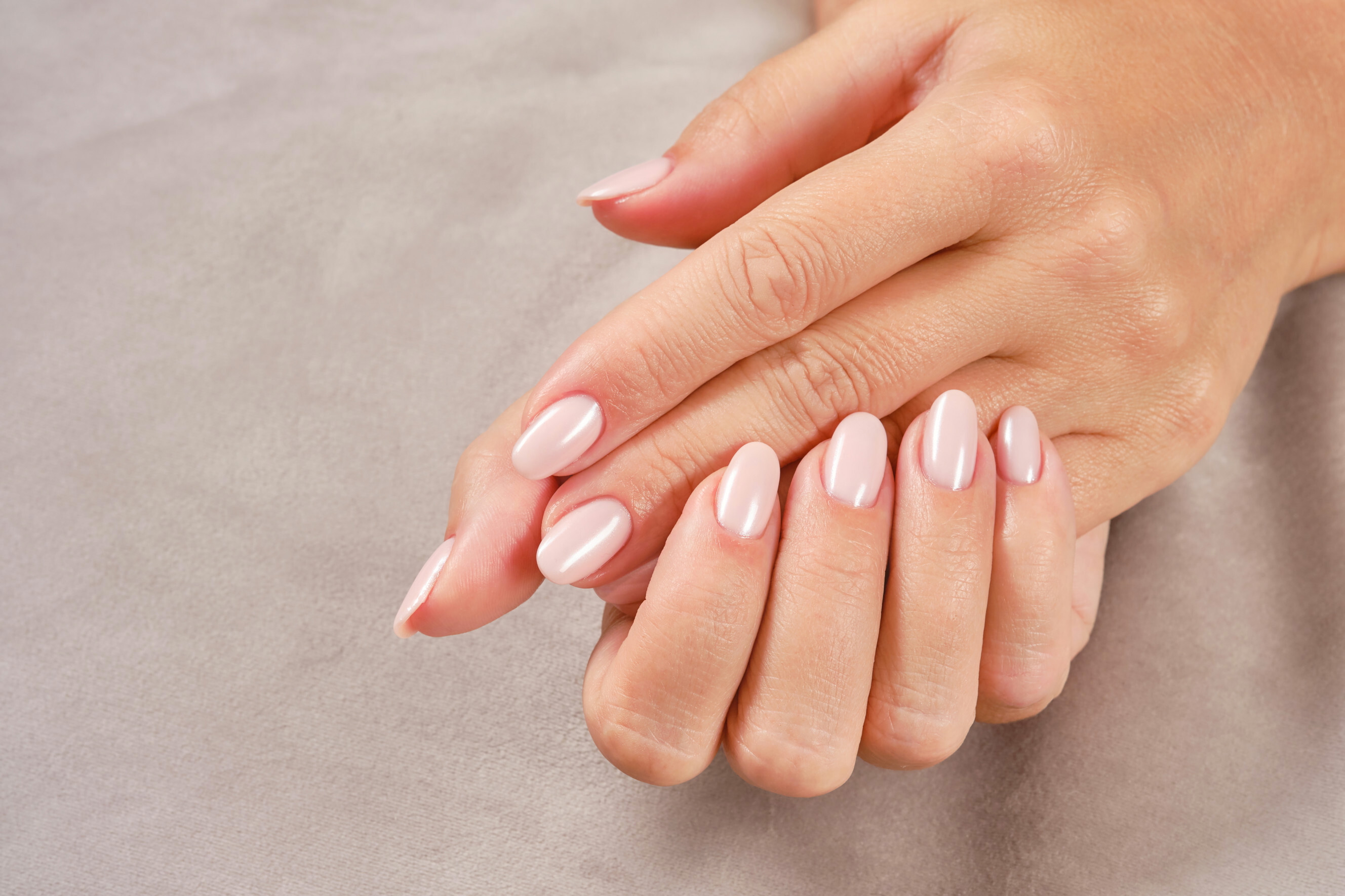
- Home/
- Comparisons/
- Nail Technicians/
- Hard Gel vs Builder Gel
Hard gel vs builder gel: Which one is right for you?
Comparing hard gel and builder gel for durability, flexibility, application, and more.
Published on

Written by Angela A.
Staff Writer
Read more about our contributor
Key Facts
Hard gel is a non-porous, durable nail gel product designed for strength and lasting wear.
Builder gel is a thicker, flexible gel used to create structure and shape for natural nails.
Nail technicians believe that one should get a professional manicure done every fortnight. But let’s face it, not everyone has the time (and even money) for that. So, it’s important to get your money’s worth with every session and make sure your nails last.
In this guide, we’ll define and compare hard gel vs builder gel to help you determine which better suits your needs just in time for your nail appointment. We got you!
What is builder gel?
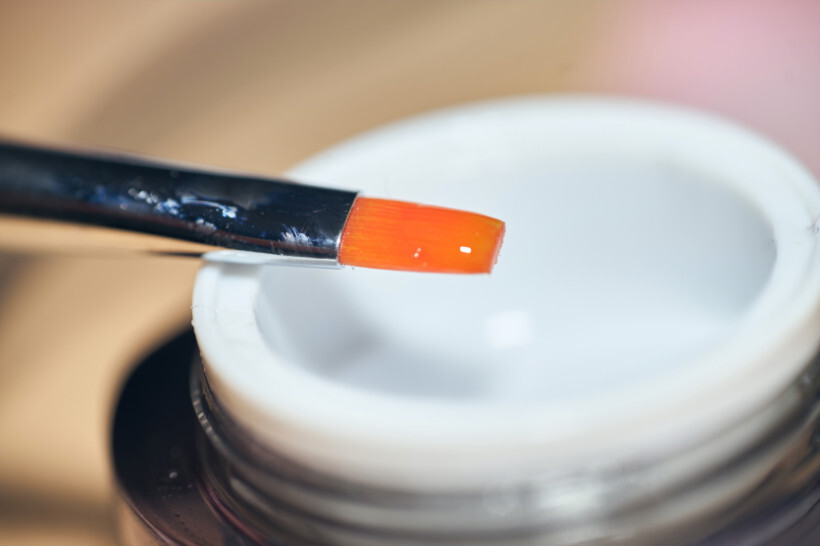 A brush dipped in builder gel, ready for nail application (Source: iStock)
A brush dipped in builder gel, ready for nail application (Source: iStock)
Builder gel is a thick type of nail gel that’s used primarily for builder gel extensions, which give your nails added length and strength. The beauty of builder gel lies in its flexibility. It allows technicians to sculpt the nails into a perfect shape that can withstand everyday wear and tear. You would also need a UV or LED lamp to set the builder gel.
What is hard gel?
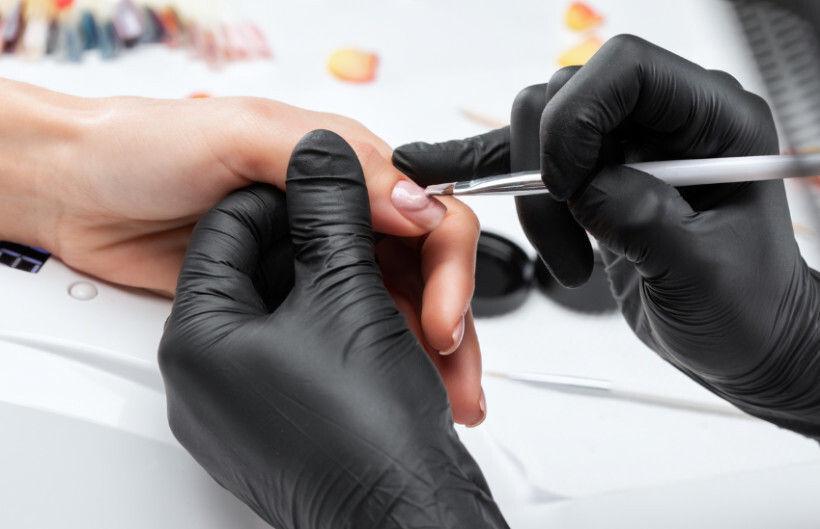 A technician applies hard gel during a nail session (Source: iStock)
A technician applies hard gel during a nail session (Source: iStock)
Hard gel is a non-porous gel that hardens when cured under a UV or LED lamp, forming a solid layer over your natural nails. It's a go-to option for many nail enthusiasts because, unlike softer gels, hard gel provides a long-lasting finish that’s perfect for those who want their manicure to withstand the daily grind.
Builder gel vs hard gel: What are their key differences?
It’s important to understand what makes each gel type unique. After all, getting the right type for your nail extensions can make all the difference in both aesthetics and durability. Let’s break down the key factors you should consider, from flexibility and strength to application techniques.
In terms of strength
 Strengthening nails with clear hard gel application (Source: iStock)
Strengthening nails with clear hard gel application (Source: iStock)
One of the usual reasons why someone would opt for nail enhancement is to have stronger nails. So, it goes without saying that the strength of the gel used should be a top priority when choosing between builder and hard gel.
Right off the bat, hard gel is the stronger option. Its superior rigidity ensures that it can endure daily activities without chipping or breaking, which is crucial for long-lasting wear. Typically, hard gel lasts about 3–4 weeks before needing maintenance, allowing you to enjoy your manicure longer.
On the other hand, builder gel provides good reinforcement but is less robust than hard gel. It’s better suited for a gel overlay or shorter extensions rather than long nails. Most find that builder gel usually lasts around 2–3 weeks.
In terms of flexibility
Flexibility plays a crucial role in determining how well the product will suit your lifestyle and nail design preferences. Maybe what you’re after is aesthetics, but what if you regularly engage in activities that require manual labour? In any case, understanding how flexible your gel is will be helpful.
As mentioned above, builder gel is pretty moldable and can move along with the natural nail. This helps reduce the risk of lifting, cracking, or chipping. This also makes it ideal for those who enjoy a more natural look. It’s particularly great for overlays and softer finishes for those wanting to grow out their natural nails.
In contrast, hard gel is less flexible and offers a solid, firm feel on the nails. This can enhance strength but may lead to cracks if the nails experience extreme stress. It’s well-suited for structured designs that need a stable base, but it doesn’t adapt well to natural nail movement.
In terms of application
 Gel nails being cured under a UV lamp for a lasting finish (Source: iStock)
Gel nails being cured under a UV lamp for a lasting finish (Source: iStock)
Hard gel and builder gel differ significantly in how they’re applied. Hard gel has a thicker viscosity, making it suitable for building strong extensions, but it can be challenging to apply smoothly.
Nail techs typically work in layers, curing each under a UV or LED light. This can make the process labour-intensive and requires a good amount of skill to achieve an even finish.
Wondering how to use builder gel? Well, since it has a medium to thinner consistency, it’s much easier to apply. Its self-levelling properties allow it to spread evenly across the nail surface, which simplifies the process for both beginners and pros alike.
In terms of nail art
Designing your nails is always a fun experience, but it’s essential to choose the right type for your desired look. There are gel and acrylic nail extensions, beads and glitter, and so much more to pick from.
However, if you’re down to choosing between hard and builder gel, it’s wise to note that hard gel is more ideal for structured and intricate designs. It provides a solid base, making it perfect for 3D creations and sculpted extensions that require detailed work. However, it typically comes in limited colours like clear or nude. So, you’ll often need a base coat nail polish to achieve more vibrant looks.
On the other hand, builder gel offers artists a canvas for both simple and complex designs. Its wider colour range includes various shades, so it allows for more creativity without the need to choose among different types of nail polish. This makes builder gel a great choice for natural-looking enhancements, such as subtle ombre effects or delicate patterns.
For delicate nail art, builder gel’s thinner consistency also makes it much easier to handle, especially for fine lines or soft gradients. It’s often more forgiving for beginners or those experimenting with detailed techniques.
In terms of maintenance
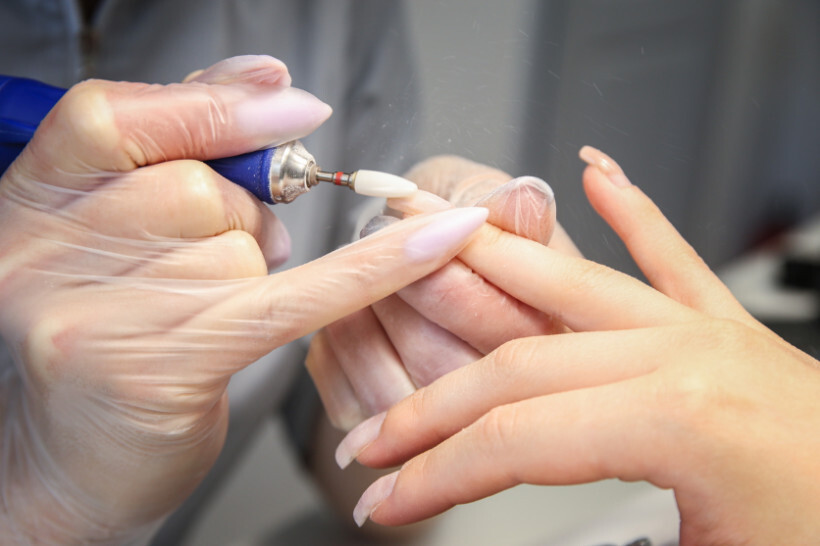 A technician buffs gel nails during a maintenance session (Source: iStock)
A technician buffs gel nails during a maintenance session (Source: iStock)
Indulging in a manicure isn’t just a treat, it’s an investment in self-care. But with an average session ranging from £17 to £35, you have to be mindful of the upkeep needed when choosing your nail enhancements. After all, no one wants their beautiful manicure to chip or break after just a few days, right?
Fortunately, hard gel’s maintenance needs typically depend on nail growth and care. Its durability means it can handle daily wear without breaking or lifting, so you won’t worry as much between appointments.
On the other hand, builder gel usually requires fills 1–2 times a month, making it a bit less long-lasting than hard gel. However, since it’s flexible, it can be easier for you to manage touch-ups at home if minor issues arise. This might be a great option if you’re looking for more natural looking nails while still keeping costs lower over time.
In terms of removal
All good things come to an end, and the same goes for nail enhancements. Whether you’re ready to switch up your look or need a fresh start, it’s essential to consider how removal will affect your nails.
Hard gel requires filing, which can be time-consuming and must be done carefully to protect the natural nail. Because it can’t be soaked off, this process is best left to professionals who know how to avoid damaging your nails. Improper removal can lead to thinning or other damage, so it’s important to get it done right.
On the other hand, builder gel can be easily soaked off with acetone, making the process much simpler and less invasive. To remove it, nails are wrapped in acetone-soaked cotton and foil for about 15–20 minutes. After, the gel can be gently pushed off. This method is gentler on the nails, making builder gel a better option for those with fragile nails.
Find your local nail technician on Airtasker
Whether you opt for hard gel or builder gel, having beautiful nails shouldn’t be a hassle. If you’re looking to simplify your next manicure or get that professional touch without the fuss, consider posting your task on Airtasker.
With just a few clicks, you can connect with skilled nail technicians who can help bring your vision to life. So why not post a task today and meet local Taskers ready to give you the nails you deserve?
Learn more about our contributors

Written by Angela A.
Staff Writer
Angela Apolonio is an experienced writer with a Biology background. She writes about home tips, car upkeep, gardening hacks, and food facts, bringing a unique blend of science and practicality to her work. As a wife and a mother, she knows the value of iron-clad routines, so she's passionate about sharing what works for her with everyone else. She loves making everyday life simpler and helping readers find fresh ideas to bring more joy into their spaces.
Side-by-side comparison
|
Builder Gel |
Hard Gel |
|
|---|---|---|
Strength |
Provides good reinforcement, ideal for shorter extensions |
Superior rigidity, perfect for long-lasting and durable nails |
Flexibility |
Highly flexible, moves with the natural nail |
Less flexible, more prone to cracks under stress |
Application |
Easier to apply, self-levelling, suitable for beginners |
Requires skill, applied in layers, takes longer to apply |
Nail Art |
Great for both simple and complex designs, wide colour range |
Ideal for structured, intricate designs, limited colour options |
Maintenance |
Requires more frequent touch-ups, easier to manage at home |
Low maintenance, more durable between appointments |
Removal |
Easily soaked off with acetone, gentle on natural nails |
Requires filing, time-consuming, best done by professionals |
FAQs on builder gels and hard gels
You might have heard about BIAB or "builder in a bottle" being compared to other gel types, but is BIAB the same as hard gel? Well, no. While both serve to strengthen your nails, BIAB is typically considered a builder gel.
Nail extensions and acrylics each have their pros and cons. Generally, extensions are seen as more flexible and lightweight, while acrylics offer durability and a wide range of designs.
Yes, hard gel can be applied over builder gel. However, this should be done carefully to ensure proper adhesion and to avoid damaging the underlying layers.
Hard gel can last anywhere from two to four weeks, depending on your nail growth and overall care.
Find nail technicians, fast
Post a task
Related guides
Related price guides

